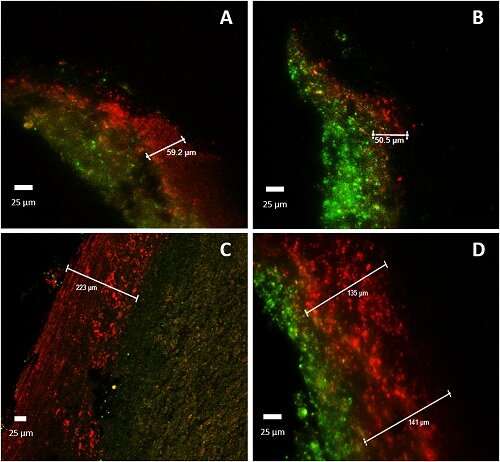Novel strategy uncovers potential to control widespread soilborne pathogens

Soilborne pathogens are a major issue worldwide as they can infect a broad range of agricultural plants, resulting in serious crop losses devastating to farmers. These persistent pathogens are often resistant toward chemical fungicides, making them difficult to control, and have a broad host range, enabling them to damage a variety of important crops.
Some of these pathogens have the ability to form survival bodies called sclerotia that can survive for many years in the soil before they cause infection and disease in new plant generations. Other microorganisms often form stable associations with these sclerotia, resulting in a complex system teeming with fungal pathogens and non-pathogenic bacteria.
A team of scientists based in Austria and Germany analyzed the microorganisms within the sclerotia of soilborne fungal pathogens from genera Rhizoctonia and Sclerotinia in attempt to discover effective control methods. In these microorganisms, the team found specific bacterial communities different from both the surrounding soil and the host plants affected by the pathogens.
They extracted samples from these communities and through additional analysis discovered that several of the bacteria can produce volatile compounds (small chemicals that easily disperse) with the potential to reduce the viability of the pathogens. The team also found that specific combinations of these bacteria can even more effectively counteract the pathogens.
This study, published in the completely open access Phytobiomes Journal, introduces a new strategy for identifying antagonistic bacteria, which can then be used to control important plant pathogens. These findings suggest that biological control of pathogens might be improved by combining different beneficial microorganisms and highlight novel strategies used to control widespread phytopathogenic fungi.
Also of note, this study "shows how a multi-phasic approach combining different disciplines (microbiology, molecular biology and analytical chemistry) can be implemented to find new solutions for plant protection," according to co-author Tomislav Cernava.
More information: Pascal Mülner et al, Microbiota Associated with Sclerotia of Soilborne Fungal Pathogens – A Novel Source of Biocontrol Agents Producing Bioactive Volatiles, Phytobiomes Journal (2019). DOI: 10.1094/PBIOMES-11-18-0051-R
Provided by American Phytopathological Society





















